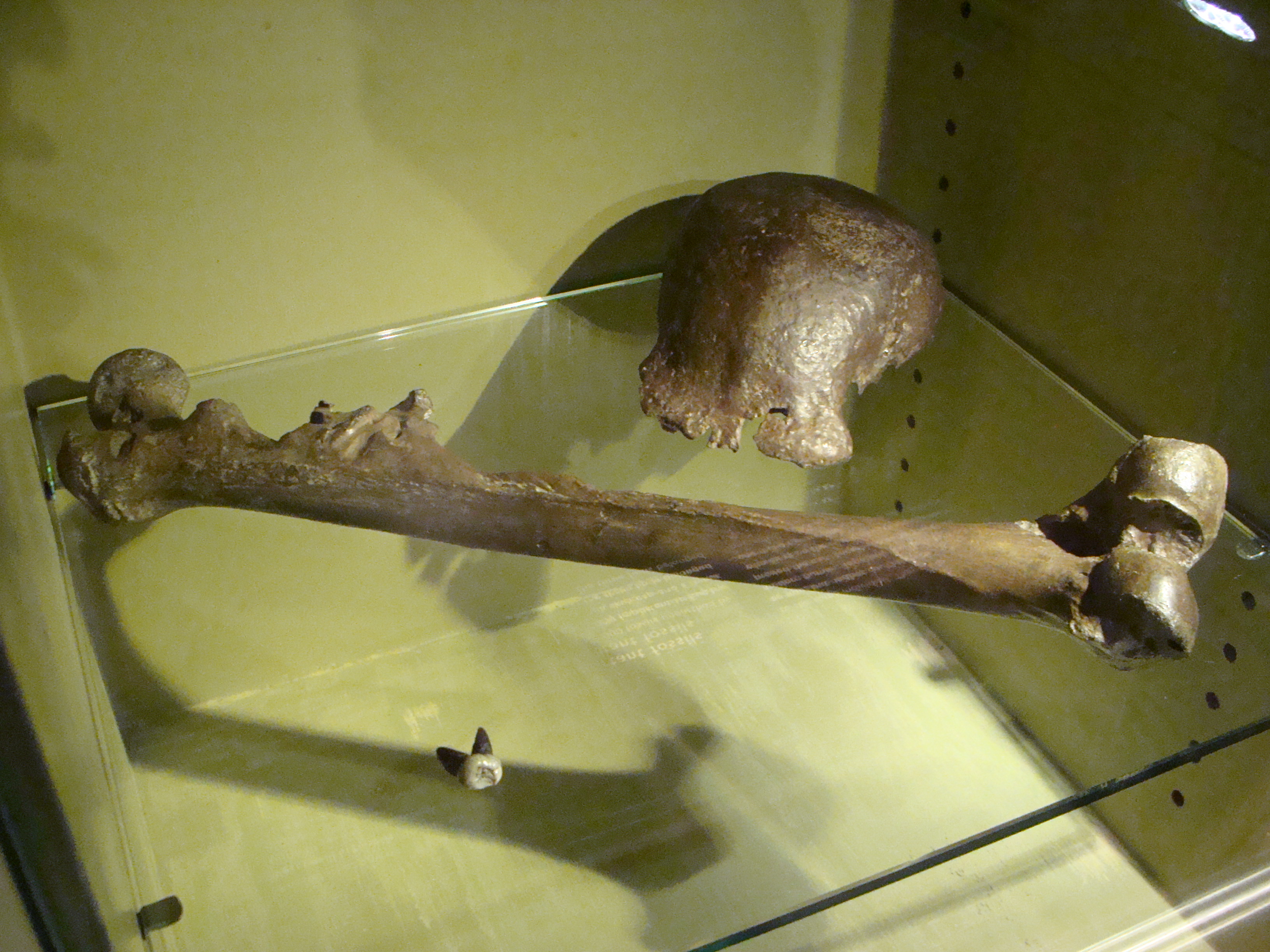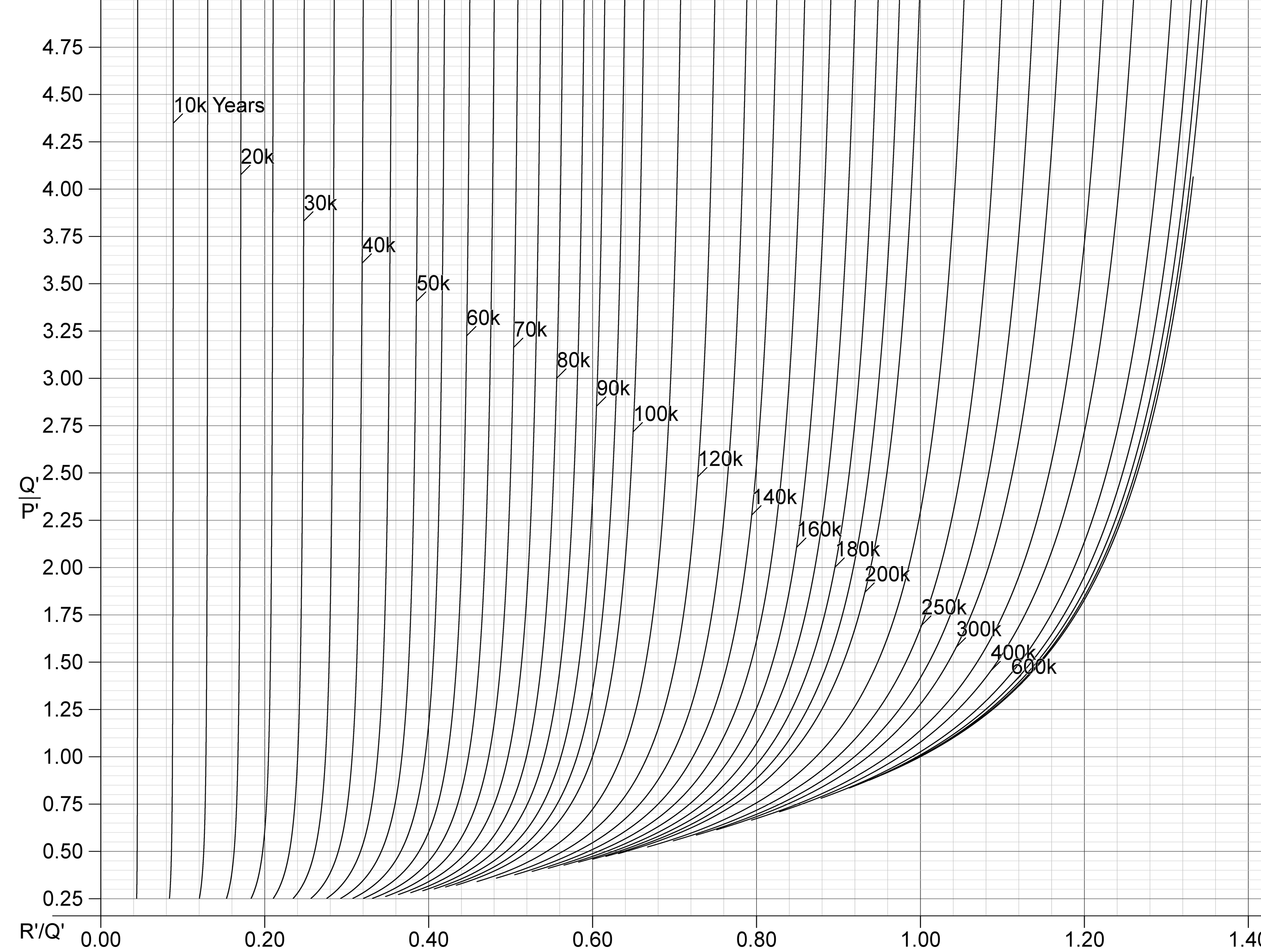|
Red Deer Cave People
The Red Deer Cave people were a prehistoric population of humans known from bones dated to between about 17,830 to c. 11,500 years ago, found in Red Deer Cave (Maludong, ) and Longlin Cave, Yunnan Province, in Southwest China. The fossils exhibit a mix of archaic and modern features and were tentatively thought to represent a late survival of an archaic human species, or of a hybrid population of Denisovan hominin and modern human descent, or alternatively just "an unfortunate overinterpretation and misinterpretation of robust early modern humans, probably with affinities to modern Melanesians". A partial genome sequence in 2022 established that, despite their morphologically unusual features, they were modern humans related to contemporary populations in East and Southeast Asia, as well as the Americas. Evidence shows large deer were cooked in the Red Deer Cave, giving the people their name. Discovery and dating In 1979, petroleum geologist Li Changqing discovered a block ... [...More Info...] [...Related Items...] OR: [Wikipedia] [Google] [Baidu] |
Longlin 1
Longlin Various Nationalities (Gezu) Autonomous County () is an autonomous county, under the jurisdiction of the prefecture-level city of Baise, in the west of Guangxi, China, bordering Guizhou Province to the north. As of 2019, the county's population was 437,907 people. The county is inhabited by several ethnic minorities, including the Miao, Yi, Gelao and Zhuang, who constitute approximately 80% of the county's population. History Present-day Longlin was incorporated first incorporated into the Song Dynasty in 1253, when it fell under the jurisdiction of Anlongdong as part of the . In 1402, the area was reorganized as Anlong Prefecture, until 1666, when it was again reorganized as . Xilong Prefecture underwent administrative changes in 1729, but otherwise went unchanged until 1912, when the Republic of China was established and the area was reorganized as Xilong County. The area became part of the People's Republic of China in March 1950, and a communist-led loc ... [...More Info...] [...Related Items...] OR: [Wikipedia] [Google] [Baidu] |
Kunming
Kunming (; ), also known as Yunnan-Fu, is the capital and largest city of Yunnan province, China. It is the political, economic, communications and cultural centre of the province as well as the seat of the provincial government. The headquarters of many of Yunnan's large businesses are in Kunming. It was important during World War II as a Chinese military center, American air base, and transport terminus for the Burma Road. In the middle of the Yunnan–Guizhou Plateau, Kunming is at an altitude of above sea level and a latitude just north of the Tropic of Cancer. As of 2020 census, Kunming had a total population of 8,460,088 inhabitants, of whom 5,604,310 lived in its built-up (or metro) area made of all urban districts but Jinning, not conurbated yet. It is at the northern edge of Dian Lake, surrounded by temples and lake-and-limestone hill landscapes. Kunming consists of an old, previously walled city, a modern commercial district, residential zones and university ar ... [...More Info...] [...Related Items...] OR: [Wikipedia] [Google] [Baidu] |
Denisovan
The Denisovans or Denisova hominins ) are an extinct species or subspecies of archaic human that ranged across Asia during the Lower and Middle Paleolithic. Denisovans are known from few physical remains and consequently, most of what is known about them comes from DNA evidence. No formal species name has been established pending more complete fossil material. The first identification of a Denisovan individual occurred in 2010, based on mitochondrial DNA (mtDNA) extracted from a juvenile female finger bone excavated from the Siberian Denisova Cave in the Altai Mountains in 2008. Nuclear DNA indicates close affinities with Neanderthals. The cave was also periodically inhabited by Neanderthals, but it is unclear whether Neanderthals and Denisovans ever cohabited in the cave. Additional specimens from Denisova Cave were subsequently identified, as was a single specimen from the Baishiya Karst Cave on the Tibetan Plateau. DNA evidence suggests they had dark skin, eyes, and hai ... [...More Info...] [...Related Items...] OR: [Wikipedia] [Google] [Baidu] |
Zhirendong
Zhiren Cave () is a karstic cave in the Mulan Mountains that overlooks the Hejiang River in Chongzuo, Guangxi, China. Zhiren Cave is an early Late Pleistocene site that has yielded the fossil remains of possibly anatomically modern humans with some mixed archaic human features. Fossils The fossil remains were discovered by Chinese paleontologists in 2007. The fossils were covered by a continuous layer of flowstone, a layer that was initially dated to around 113,000 to 100,000 BP. A more thorough re-dating was later undertaken, and gives an estimated date of around 116,000 to 106,000 BP. Some of the large mammal remains discovered at Zhiren Cave include those from ''Pongo pygmaeus'', ''Elephas kiangnanensis'', ''Elephas maximus'', ''Megatapirus augustus'', ''Rhinoceros sinensis'', ''Megalovis guangxiensis'', Cervus unicolor, ''Ursus thibetanus'', ''Arctonyx collaris'' and ''Panthera pardus''. Around 25% of the large mammal species discovered at the site are now extinct. Three ... [...More Info...] [...Related Items...] OR: [Wikipedia] [Google] [Baidu] |
Early Modern Human
Early modern human (EMH) or anatomically modern human (AMH) are terms used to distinguish ''Homo sapiens'' (the only extant Hominina species) that are anatomically consistent with the range of phenotypes seen in contemporary humans from extinct archaic human species. This distinction is useful especially for times and regions where anatomically modern and archaic humans co-existed, for example, in Paleolithic Europe. Among the oldest known remains of ''Homo sapiens'' are those found at the Omo-Kibish I archaeological site in south-western Ethiopia, dating to about 233,000 to 196,000 years ago, the Florisbad site in South Africa, dating to about 259,000 years ago, and the Jebel Irhoud site in Morocco, dated about 315,000 years ago. Extinct species of the genus ''Homo'' include '' Homo erectus'' (extant from roughly 2 to 0.1 million years ago) and a number of other species (by some authors considered subspecies of either ''H. sapiens'' or ''H. erectus''). The divergen ... [...More Info...] [...Related Items...] OR: [Wikipedia] [Google] [Baidu] |
Homo Habilis
''Homo habilis'' ("handy man") is an extinct species of archaic human from the Early Pleistocene of East and South Africa about 2.31 million years ago to 1.65 million years ago (mya). Upon species description in 1964, ''H. habilis'' was highly contested, with many researchers recommending it be synonymised with ''Australopithecus africanus'', the only other early hominin known at the time, but ''H. habilis'' received more recognition as time went on and more relevant discoveries were made. By the 1980s, ''H. habilis'' was proposed to have been a human ancestor, directly evolving into ''Homo erectus'' which directly led to modern humans. This viewpoint is now debated. Several specimens with insecure species identification were assigned to ''H. habilis'', leading to arguments for splitting, namely into "'' H. rudolfensis''" and "''H. gautengensis''" of which only the former has received wide support. Like contemporary ''Homo'', ''H. habilis'' brain size generally varied from . ... [...More Info...] [...Related Items...] OR: [Wikipedia] [Google] [Baidu] |
Homo Erectus
''Homo erectus'' (; meaning " upright man") is an extinct species of archaic human from the Pleistocene, with its earliest occurrence about 2 million years ago. Several human species, such as ''H. heidelbergensis'' and ''H. antecessor'' — with the former generally considered to have been the ancestor to Neanderthals, Denisovans, and modern humans — appear to have evolved from ''H. erectus''. Its specimens are among the first recognizable members of the genus ''Homo''. ''H. erectus'' was the first human ancestor to spread throughout Eurasia, with a continental range extending from the Iberian Peninsula to Java. Asian populations of ''H. erectus'' may be ancestral to '' H. floresiensis'' and possibly to '' H. luzonensis''. The last known population of ''H. erectus'' is '' H. e. soloensis'' from Java, around 117,000–108,000 years ago. ''H. erectus'' had a more modern gait and body proportions, and was the first human species ... [...More Info...] [...Related Items...] OR: [Wikipedia] [Google] [Baidu] |
Uranium–thorium Dating
Uranium–thorium dating, also called thorium-230 dating, uranium-series disequilibrium dating or uranium-series dating, is a radiometric dating technique established in the 1960s which has been used since the 1970s to determine the age of calcium carbonate materials such as speleothem or coral. Unlike other commonly used radiometric dating techniques such as rubidium–strontium or uranium–lead dating, the uranium-thorium technique does not measure accumulation of a stable end-member decay product. Instead, it calculates an age from the degree to which secular equilibrium has been restored between the radioactive isotope thorium-230 and its radioactive parent uranium-234 within a sample. Background Thorium is not soluble in natural water under conditions found at or near the surface of the earth, so materials grown in or from this water do not usually contain thorium. In contrast, uranium is soluble to some extent in all natural water, so any material that precipitates o ... [...More Info...] [...Related Items...] OR: [Wikipedia] [Google] [Baidu] |
Braincase
In human anatomy, the neurocranium, also known as the braincase, brainpan, or brain-pan is the upper and back part of the skull, which forms a protective case around the brain. In the human skull, the neurocranium includes the calvaria or skullcap. The remainder of the skull is the facial skeleton. In comparative anatomy, neurocranium is sometimes used synonymously with endocranium or chondrocranium. Structure The neurocranium is divided into two portions: * the membranous part, consisting of flat bones, which surround the brain; and * the cartilaginous part, or chondrocranium, which forms bones of the base of the skull. In humans, the neurocranium is usually considered to include the following eight bones: * 1 ethmoid bone * 1 frontal bone * 1 occipital bone * 2 parietal bones * 1 sphenoid bone * 2 temporal bones The ossicles (three on each side) are usually not included as bones of the neurocranium. There may variably also be extra sutural bones present. Below the ... [...More Info...] [...Related Items...] OR: [Wikipedia] [Google] [Baidu] |
Ji Xueping
Ji or JI may refer to: Names and titles * Ji (surname), the pinyin romanization of a number of distinct Chinese surnames * Ji (Korean name), a Korean surname and element in given names (including lists of people with the name) * -ji, an honorific used as a suffix in many languages of India * J.I the Prince of N.Y, American rapper also known as J.I. * Ji (or Hou Ji), legendary founder of Zhou dynasty Places in China * Jì (冀), pinyin abbreviation for the province of Hebei * Jí (吉), pinyin abbreviation for the province of Jilin * Ji (state), an ancient Chinese state * Ji City (other), several places * Ji County (other), several places * Ji Prefecture (Shandong), a prefecture in imperial China * Ji Province, one of the Nine Provinces of ancient China * Ji River, either of two former rivers Organizations * Jamaat-e-Islami (other), several organizations * Jemaah Islamiyah (JI), a Southeast Asian militant Islamist rebel group * Jurong Institute ( ... [...More Info...] [...Related Items...] OR: [Wikipedia] [Google] [Baidu] |
Darren Curnoe
Darren is a masculine given name of uncertain etymological origins. Some theories state that it originated from an Anglicisation of the Irish first name Darragh or Dáire, meaning "Oak Tree". According to other sources, it is thought to come from the Gaelic surname meaning ‘great’, but is also linked to a Welsh mountain named Moel Darren. It is also believed to be a variant of Darrell, which originated from the French surname ''D'Airelle'', meaning "of Airelle". The common spelling of Darren is found in the Welsh language, meaning "edge": Black Darren and Red Darren are found on the eastern side of the Hatterrall Ridge, west of Long Town. In New Zealand, the Darran Mountains exist as a spur of the Southern Alps in the south of the country. Darren has several spelling variations including Daren, Darin, Daryn, Darrin, Darran and Darryn. In the United Kingdom, its popularity peaked during the 1970s but declined sharply afterwards. In England and Wales, it first appeared in the ... [...More Info...] [...Related Items...] OR: [Wikipedia] [Google] [Baidu] |





